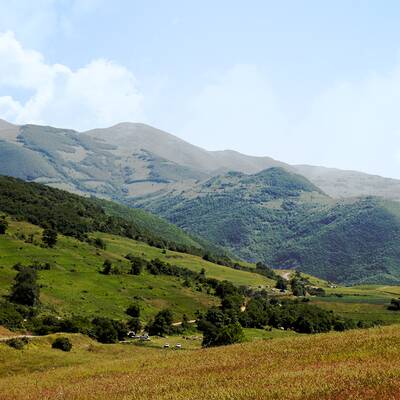Tabriz is the flower of Iranian cities; a historical and beautiful city, replete with various historical, cultural and religious attractions that fills the backpack of every tourist who comes to visit with history, delight and happiness. One of the historical-religious attractions of the beautiful and genuine city of Tabriz is the Blue Mosque, a mosque like the blue of the sea and the azure of the sky. By walking in the mosque you will discover the beauty and richness of Islamic-Iranian architecture and a deep tranquility and peacefulness will sweep through you. The main structure of the Mosque is brickwork embellished with dark blue and turquoise tiling. In Turkish, the language of the citizens of Tabriz, the Blue Mosque is called Göy Məscid meaning ‘the blue mosque.’ The Blue Mosque was built by the Kara Koyunlu in the fifteenth century. To be more precise, it was Sultan Jahan Shah, the powerful Kara Koyunlu king, who ordered the construction of this magnificent mosque upon the request of his daughter Sāleheh Khānum in 1465 AD, making the mosque both a gift to his daughter and to all those who would centuries later set foot in the mosque and lose themselves in its endless blue. Once you enter, you will find yourself in a beautiful mosque that looks like a cracked and repaired mirror; these cracks are traces of a devastating earthquake that trembled Tabriz in 1780 inflicting substantial damage to the Mosque and even causing the Mosque’s dome to collapse. As one of the most exquisite examples of Iranian architecture, this beautiful mosque remained in ruins for 150 years and renovations did not begin until 1939 when it was restored and reconstructed. The Blue Mosque is also referred to as the Turquoise of the Islamic World. A unique architecture and tilework color has been used in the Mosque, which many believe has not been constructed only in Azeri style, but it is the result of a blend of local mentality and traditional techniques. Apart from the Mosque’s unique coloring, the other things that draw the attention of every visitor to themselves are the fine lines and shapes and variety of design in the tilework. Part of the ceiling’s tilework design is based on a combination of gold and turquoise. The Mosque has a rectangular courtyard with a pond in the middle and several Shabestāns (galleries). In addition, the Mosque has two major and seven minor domes above the galleries. The Blue Mosque is now a historical monument and open to foreign visitors. Due to changing of visiting hours in different seasons, you are advised to enquire at local tourism stations prior to arriving at the site of the Mosque.


